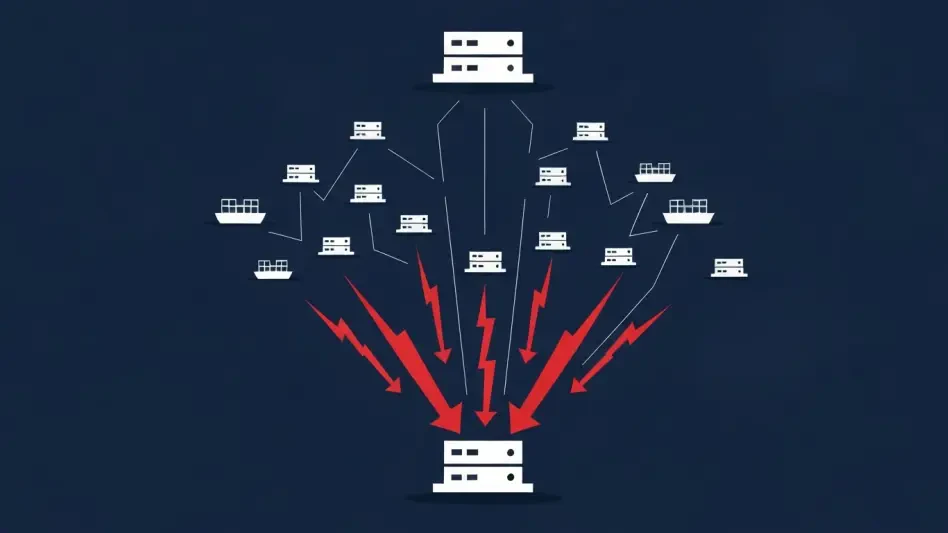In a world increasingly fortified by advanced cybersecurity measures, a chilling breach often occurs not through a firewall but via a simple phone call, where a corporate executive might receive an urgent voicemail from their CEO with a voice that seems unmistakable, requesting immediate access to sensitive data. Unbeknownst to them, it’s a deepfake, crafted with AI precision to deceive, highlighting a seismic shift in cybercrime where human trust, not technology, is the prime target. Social engineering has surged as the leading method of attack, manipulating emotions and authority to bypass even the most robust digital defenses.
This alarming trend demands attention as it reshapes the landscape of cybersecurity threats. Hackers are no longer solely relying on malware or brute force; instead, they exploit the inherent trust embedded in human interactions. With 36% of incident response cases from a recent Palo Alto Networks report linked to social engineering, the stakes have never been higher. This feature delves into why trust has become the new battleground, how these attacks unfold, and what can be done to safeguard against deception in an era where even a familiar voice cannot be trusted.
Why Hackers Exploit Trust Over Technology
The pivot to social engineering reflects a strategic evolution in cybercrime, where human psychology proves more vulnerable than code. Hackers recognize that while organizations invest heavily in technical defenses, employees remain susceptible to manipulation. Using tools like AI-driven voice cloning, attackers craft scenarios that prey on urgency or familiarity, convincing even skeptical individuals to act against their better judgment.
This approach is not just opportunistic but calculated, as cybercriminals target high-value individuals whose access can unlock vast systems. Executives, with their expansive privileges, are prime targets for impersonation schemes that can lead to catastrophic breaches. The ease of mimicking a trusted figure through deepfake technology amplifies the risk, turning a routine interaction into a gateway for data theft or financial fraud.
Unlike traditional exploits that require technical loopholes, social engineering leverages emotional triggers, making it harder to detect. A fabricated emergency call or a forged email from a superior can bypass multifactor authentication if the recipient panics or trusts the source. This shift highlights a critical gap in cybersecurity: no algorithm can fully protect against human error or misplaced confidence.
The Rising Danger of Psychological Manipulation
As digital defenses strengthen, social engineering has emerged as the dominant entry point for cyberattacks, outstripping older methods like phishing links. According to Palo Alto Networks, over a third of investigated incidents in the past year stemmed from these tactics, often aimed at corporate leaders with access to critical infrastructure. This statistic reveals a stark reality—hackers are adapting faster than many organizations can respond.
The focus on human manipulation is a direct response to improved security measures such as enhanced firewalls and software patches. Cybercriminals now craft personalized attacks, exploiting trust in authority figures to extract credentials or initiate unauthorized transactions. This trend is particularly concerning in industries handling sensitive data, where a single breach can ripple across entire sectors.
Beyond immediate access, these attacks erode confidence in communication channels within organizations. When employees second-guess every request or call, productivity suffers, and paranoia sets in. The psychological toll, combined with potential financial losses, positions social engineering as a uniquely destructive threat in today’s interconnected digital environment.
Unpacking the Tactics and Consequences of Deception
Social engineering encompasses a range of cunning methods, each designed to exploit specific human weaknesses. AI-powered tools enable hackers to replicate voices or create convincing videos, impersonating executives to trick staff into resetting passwords or sharing confidential information. Such tactics have been documented in attacks on major firms, demonstrating their alarming effectiveness.
High-profile targets, particularly those with privileged access, bear the brunt of these schemes. Reports indicate that two-thirds of social engineering incidents focus on executive accounts, aiming for maximum impact through data theft or system disruption. The fallout is often severe, with over half of these breaches resulting in compromised sensitive information, as seen in the retail sector with losses reaching hundreds of millions.
A striking example is the attack on the British retailer Co-op, where hackers impersonated an employee to bypass security protocols, leading to a staggering $275 million in lost sales. This incident, among others, illustrates the broad reach of social engineering across industries like aviation and insurance, underscoring the urgent need for heightened vigilance and robust countermeasures.
Voices from the Frontline: Expert Warnings and Real Cases
Industry leaders are sounding the alarm on the escalating sophistication of social engineering threats. Sam Rubin, senior vice president at Palo Alto Networks’ Unit 42, emphasizes the critical role of executives as targets, noting, “With expansive privileges, they hold the keys to the corporate kingdom.” This perspective highlights why attackers prioritize those at the top for maximum disruption.
Further insight comes from Scott McCollum of Google’s Threat Intelligence Group, who cautions, “Vocal or video spoofing of executives has become a legitimate risk.” His warning is echoed in real-world incidents, such as the Co-op breach, where chief digital officer Rob Elsey testified before a House of Commons subcommittee about hackers exploiting security questions to reset credentials in mere hours.
Additional cases, like the social engineering attack on Workday, reveal how impersonation of IT and HR officials can deceive employees into compromising accounts. These accounts, paired with expert testimonies, paint a vivid picture of a threat that transcends technology, striking at the heart of organizational trust and personal accountability.
Building Defenses Against Human-Centric Attacks
Countering social engineering requires a blend of awareness and actionable strategies tailored to both individuals and corporations. For high-profile targets, experts like Sam Lewis from Google Threat Intelligence advise limiting online exposure by restricting personal details on social media, especially regarding travel or family. Such precautions reduce the data available for attackers to exploit.
At an organizational level, adopting phishing-resistant multifactor authentication adds a critical layer of security against credential theft. Equally important is the implementation of out-of-band verification for sensitive actions like password resets or financial changes, ensuring requests are confirmed through separate, secure channels. These measures have proven effective in mitigating risks highlighted by groups like Scattered Spider.
Education remains a cornerstone of defense, as employees must be trained to recognize red flags in urgent or unusual requests. Simulated exercises and updated protocols, as adopted by companies post-breach, can prepare teams for real incidents. By fostering a culture of skepticism toward unverified communications, organizations can significantly diminish the success rate of these deceptive attacks.
Reflecting on a Battle Fought on Trust
Looking back, the surge in social engineering has exposed a fundamental vulnerability in the digital age—human trust. Each breach, from retail giants to tech firms, has served as a stark reminder that no firewall can fully shield against a well-crafted lie. The stories of impersonated voices and forged identities have left an indelible mark on how security is perceived.
Yet, amidst the challenges, a path forward has emerged through vigilance and innovation. Organizations have begun to prioritize training and verification processes, while individuals have learned to guard their digital footprints. Moving into the future, the focus must remain on evolving defenses to match the ingenuity of attackers, ensuring that trust, once exploited, becomes a fortified asset rather than a liability.








